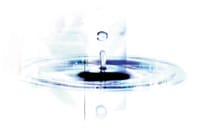rx
perspective
Shielding the Eye from Dryness
By forming a protective coating over the cornea, Systane may do a lot to preserve health and comfort.
By Shachar Tauber, M.D.
Historically, the selection of an artificial tear has been directed by trial and error between the physician and patient. However, one new product in this class, Systane, stands out from the others.
Forming a Protective Shield
Systane -- which is preserved with Polyquad -- contains two demulcents (propylene glycol and polyethylene glycol 400), along with a novel gel-forming polymer, hydroxypropyl guar (HP-guar) that prolongs retention of the demulcents in the eye. (Systane also contains ions essential to good ocular health.) When instilled into the eye, the pH of the ocular surface causes the HP-guar to form reversible crosslinks with the borate ions in the solution. The result is a soft, gel-like protective coating that spreads across the ocular surface.

These properties give Systane important clinical characteristics:
Longer dwell-time. If tear film break-up time is insufficient compared with the interval between each blink, the ocular surface is exposed and more susceptible to damage. Systane's gelling properties allow for a longer dwell-time, so the ocular surface is protected by the demulcents for a longer time between blinks.
Patients can actually observe this using a simple noninvasive method: If they blink and then stare, they can hold their eyes open longer before they feel discomfort (as reported at this year's ARVO meeting). This kind of protection is particularly critical for patients exposed to adverse environmental conditions or visual tasking such as working on a computer.
Integration into the mucin layer. Because Systane integrates into the mucin layer of the glycocalyx, it helps protect the epithelium. A proper balance of components such as pH, osmolarity, hydration, oxygenation and amino acids is needed to maintain an ideal microenvironment on the ocular surface, and Systane helps to accomplish this.
This is important not only for the ongoing management of dry eye, but also both pre- and postoperatively when performing LASIK. Corneal nerves are cut during LASIK, leading to decreased sensitivity, decreased tear reflex and blink, and increased exposure of the ocular surface, increasing the likelihood of damage. Maximizing ocular surface health before surgery (i.e., decreasing staining), reducing epithelial defects and proactively maintaining the ocular surface postoperatively are important steps toward improved surgical outcomes.
Clinical Results
In one 6-week, 87-patient, environmental trial against the leading artificial tear, reported at this year's ARVO meeting, use of Systane resulted in:
- a 51% reduction in corneal staining from baseline
- statistically superior reduction in conjunctival staining compared with the other tested product
- significant improvement over the control of three symptomatic measurements of dry eye; morning dryness, end-of-day dryness, and foreign body sensation.
Systane also demonstrated a very good safety profile.
The Future Looks Bright
Initial use of Systane in our clinic has elicited promising feedback from patients; they appear to be getting more relief than they've been able to obtain with other therapies. Systane should be a promising addition to any practice's dry eye relief armamentarium.
Dr. Tauber is assistant professor of ophthalmology and director of cornea, contact lens and refractive surgery at Yale School of Medicine in New Haven, Conn.








